|
|
Expedition
Expedition | People
|
Log - August-13-2003
by Robert McCarthy
Previous | Next
Dive, XBT! Dive!
Robert McCarthy |
| Two days ago I mentioned that I took 3 CTD casts on the small boat just to feel useful. Well, The data from one of those casts looks like this: See fig 1 courtesy of Melissa Zweng. This graph shows temperature as a function of depth, salinity as a function of depth, and pressure as a function of depth. The CTD has a pressure sensor encased in it to measure the depth. So if I held it at a fixed depth, it would recognize that it stopped. These were short casts (obviously), and the ship can make very deep casts with the CTD on the underside of the rosette cage. But there is any easy way to get a plot of temperature with depth. Enter the XBT. X for expendable, and BT for bathythermograph. |
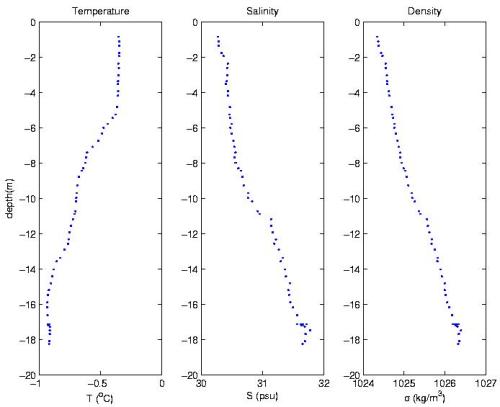 |
| The MSTís (Marine Science Technicians) on board the Healy do an XBT cast each day. Here, Suzanne Scrivens is shown making a launch, and holding one up so we can see whatís inside the tube. All it is is a torpedo shaped object that contains 760 meters of coiled, fine copper wire. They hook it up to a ďgun-launcherĒ, and release it into the water. The water turns it on, and it measures temperature as a function of time (with its internal clock). When the XBT reaches the bottom or 760 meters, the fine copper wire breaks, and itís gone forever. But how does it know depth? The answer is STOKES! |
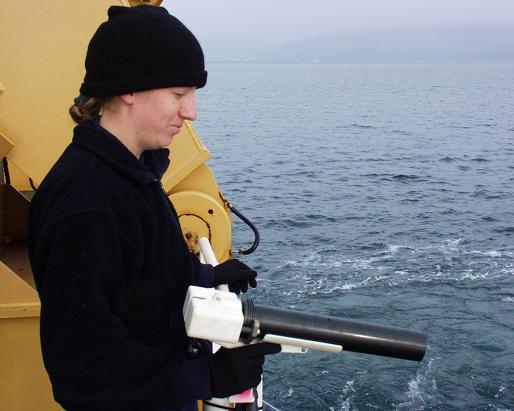 |
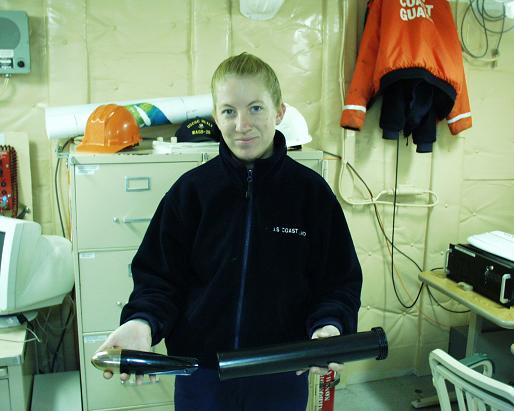 |
When an object falls through a viscous fluid, it is slowed down by a retarding force, or drag force due to resistance of the fluid. This force is a function of the shape of the object and its velocity, and is called the viscous drag force. Letís investigate the simple case of a sphere falling through a liquid. See the diagram below. |
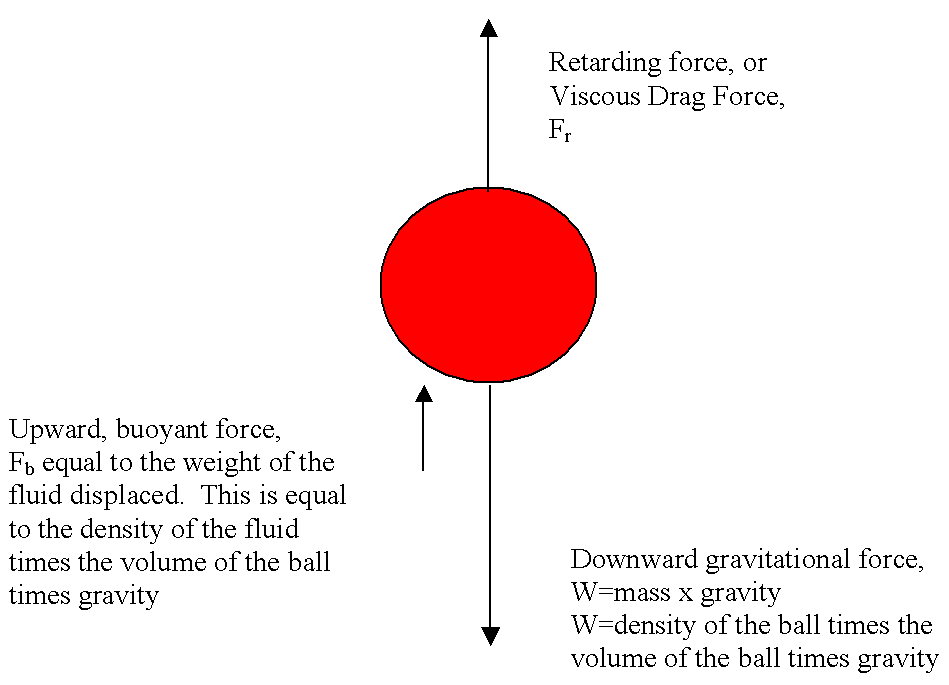 |
| George Stokes in 1845 found that the magnitude of the drag force on a small, spherical object of radius r, to be |
 |
| where v is the velocity of the sphere, and eta is the viscosity of the fluid. This relationship is known as Stokesís Law. Once terminal velocity is reached, there is a balance of the above-diagramed forces, and no more acceleration occurs. At this point, the object is traveling the fastest, but stays at this velocity. I wonít derive it here but the velocity of the ball can be calculated by balancing the forces in the above diagram, and by knowing the volume of a sphere. Skydivers experience terminal velocity when they jump out of an airplane. With arms and legs out, chest parallel to the ground, the skydiver soon reaches a constant velocity (no more acceleration). By changing their body configuration, they can accelerate to a new terminal velocity. This is how skydivers can make those formations even though they all donít jump out simultaneously, and how they can break formation and disperse so their chutes donít get tangled. So you can see that the objectís shape has a lot to do with the terminal velocity. |
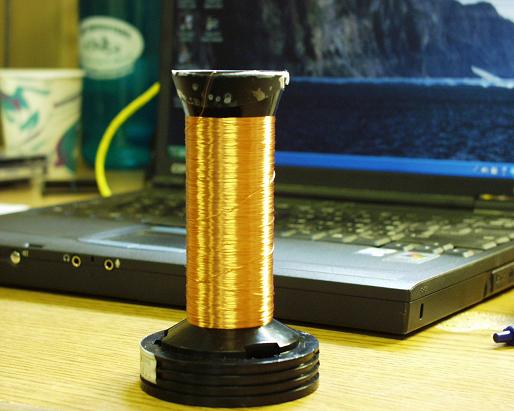 |
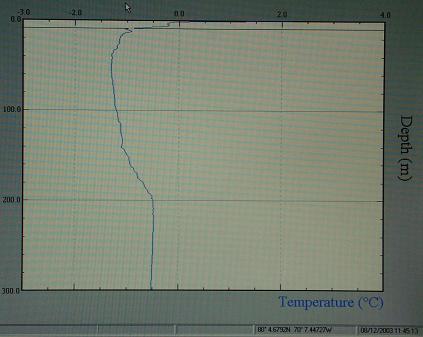 |
Well, the designers at Sippican, Inc., have measured the time these XBTís take to reach terminal velocity, and measured the terminal velocity of the XBTís. So they calibrated the internal time clock with a depth equivalent. The launch Suzanne made was only in water about 200 meters deep, and you can clearly see from the graph that the temperature remains constant from that depth onwards. The fine copper wire spooled completely out, and the tug from the sensor on the bottom broke the wire. Here is what the inside copper wire looks like from one where the wire broke early. |
|
